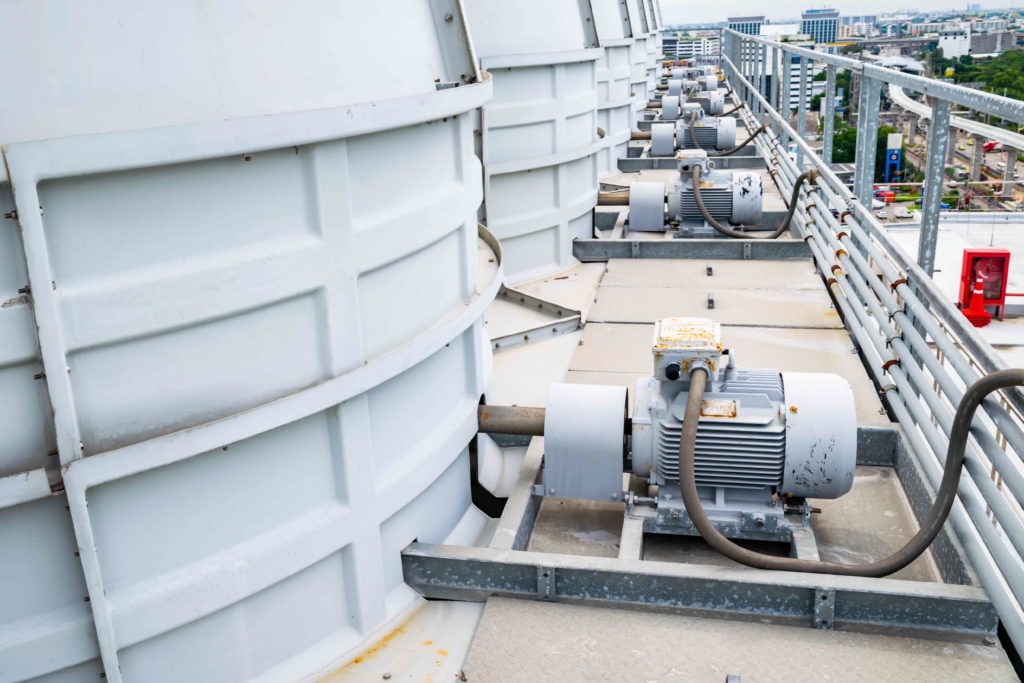VSDs improve HVAC energy efficiency and safety during pandemics

[Source: Shutterstock]
As we have learnt since 2020, the Covid 19 pandemic is showing no signs of abating. Building owners face the dual challenges of reducing energy consumption while safeguarding the health and well-being of building occupants. VSDs help achieve both by improving HVAC energy efficiency and occupant safety during pandemics.
On the occupant health front, the emergence of contagious respiratory diseases (e.g., COVID-19, SARS, H1N1, MERS) has prompted facility managers and engineers to rethink HVAC designs. Efforts include reducing the spread of pathogens by purifying air, improving ventilation, and better managing airflows.
Building engineers and OEMs can help achieve these HVAC energy efficiency objectives by designing systems that prioritise energy efficiency and occupant safety. One key technology that can address both these concerns is the new generation IIoT-ready variable speed inverter drives (VSDs). VSDs used in buildings optimise control of ventilation performance to deliver superior airflow and reduced energy consumption.
Listed below are four ways that OEMs and end users can benefit from the integration of VSDs into HVAC systems:
Directed airflows
Ducted HVAC systems can increase the rate of fresh air exchange and reduce recirculated air to lessen pathogen spread. For example, the traditional practice is to shut down ventilation systems overnight and on weekends which halts air circulation. A VSD integrated HVAC system could run at low speed to increase the air replacement while consuming little energy.
Replacing traditional fixed-speed motor control with VSDs allows facilities managers to adjust airflow settings based on building occupancy. In practice, with VSDs, regulation of ventilation systems can become a function of the number of people in a room. They can configure different rates of ventilation across the building, to match actual occupancy rates.
Easier management and control
VSDs can work in standalone mode or managed by programmable logic controllers (PLCs) or building management systems (BMS). Schneider Electric VSD’s are BMS compatible and include communications and embedded alerting functionality called VSD Smart Widget. They also support BACnet, the main communications protocol used in buildings.
Moreover, they are capable of monitoring connected devices like fan motors and can issue alerts when behavioural anomalies occur. For example, on detecting a slipping fan drive belt, the VSD will send out an alert. Furthermore, if a motor is overheating, sensors send the information back via the VSD to the ventilation alert system operators. Using connected building solutions makes VSDs like ATV212 easy to integrate and decreases the number of individuals needed on-site for installation and operation.
HVAC energy efficiency
HVAC energy efficiency savings represent one of the biggest benefits of VSDs. They can save up to 40% in energy consumption, when compared to fixed speed drives. This means commercial building owners can experience payback periods of less than one year. VSDs are suitable for both new build and retrofitting. They work with simple air pressure sensors to regulate airflow without requiring external PLCs or other automation systems.
Compact and simple HVAC VSDs also allow the upgrading of existing systems without changing motors or fans. To overcome floor space constraints, the drive can also be cabinet, wall and even roof mounted. VSDs can communicate with existing BMS systems through flexible communication protocols like LonWorks, BACnet, and Modbus.
VSDs represent an opportunity for OEMs who configure and build these systems, and for end users who can enjoy the health and energy-saving benefits.
Recent blog posts
